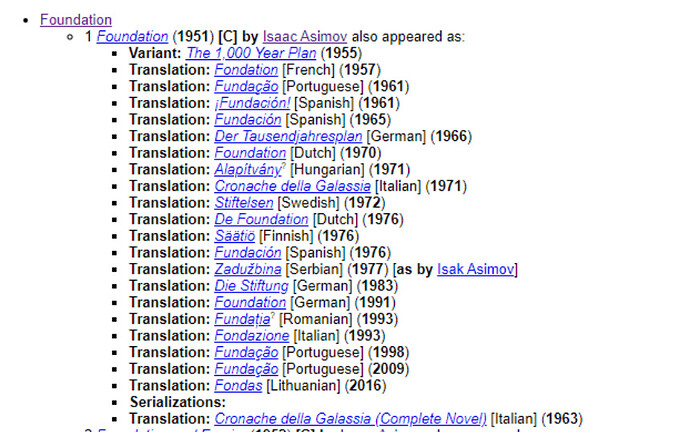I’d like to contribute to the BookBrainz style guidelines. I thought I’d start by taking a crack at a guideline for the disambiguation field. There was some discussion on IRC about a process for this; meanwhile I wanted to get the beginning of a draft in front of the contributors, for comment.
(Very) rough draft follows. My examples can use some work.
Disambiguation
The disambiguation field is used to help distinguish ambiguous records. They are visible in the record pages, and also appear in the search results next to their names.
The disambiguation should be written in English if possible and kept fairly short.
When a disambiguation field should be used
Disambiguation fields of records should be specified when any of the following conditions occur, in any combination:
-
When two or more records of the same type contain an identical name.
-
When two or more records of the same type contain names where only articles or short prepositions are added or are different, e.g. “the”, “and”, “for”, etc. Examples:
- “Enemy Territory” and “In Enemy Territory”
- “Sands of Time” and “The Sands of Time”
- “Cause or Effect” and “Cause and Effect”
- “This and That” and “This for That”
- When two or more records of the same type contain names where the differences are singular vs. plural. Examples:
- “Rude Awakening” and “Rude Awakenings”
- “The Wild Horse” and “Wild Horses”
- When the name of a record contains a single word, or two words where the first word is an article. Examples:
- “Windows”
- “The Duel”
- “An Harmonica”
[Editorial note: My rationale for including 4. above this is that: a) it contains very low content (single word) and disambiguation can be helpful in simply identifying it, and b) it stands a very high probability collision in the future and lightens the burden of those entering the same title later, deciding if it’s the same as theirs or not.]
- When the difference between names are variations in spelling, spacing, hyphenation or the abbreviation of words. Examples:
- “The Color of Money” and “The Colour of Money”
- “Starships in Space”, “Star Ships in Space” and “Star-Ships in Space”
- “Doctor Teeth” and “Dr. Teeth”
- When the work is originally in another language, and the name of the work being entered is the translation of the name in its original language.
When disambiguation field should not be used
-
To provide a description of a record that would otherwise not be ambiguous. Use annotations to provide such descriptions.
-
For records of different types with the same name. There are sufficient cues in the icons next to the name to disambiguate identical names of different types.
Disambiguation field content
For works
- Translated work. If a work has been translated from its original language, the disambiguation field should reference the author(s) of the translation, followed by “translation”.
- “Statesman (Benjamin Jowett translation)”
- “War and Peace (Louise & Aylmer Maude translation)”
- “The Art of War (Lionel Giles translation)”
-
Different authors. If the name of a work is ambiguous, the disambiguation field should contain the name of the author and the work type. Examples:
• The Apple (O. Henry short story)
• The Apple (H. G. Wells short story)
For editions and edition groups
For editions and edition groups that require disambiguation, the author name(s) should be listed in the disambiguation field. For example, there are a number of editions and edition groups named “Short Fiction”, each for a different author. Examples:
- “Short Fiction (Philip K. Dick)”
- “Short Fiction (P. K. Wodehouse)”
That’s where I am so far. Still to do:
- add content guidelines for: series, author and publisher
- get guidance on whether editions and edition groups should combine translations of the same work
Your feedback would be greatly appreciated.
